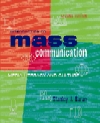In preliterate cultures knowledge was passed on orally. With the advent of
writing, literacy became more highly valued than memory. After Gutenberg;#8217;s invention
of the printing press, literacy spread to all levels of society and by the mid-19th
century, a middle class with discretionary time and income had emerged, providing
a mass audience of readers. Mass media helped to unify the diverse cultures
of the United States. Television in particular was instrumental in transforming
our country into a consumer economy. Understanding the ways in which media impact individuals and society is an
important aspect of media literacy. Other elements include an understanding
of the process of mass communication and an awareness of media content as a
"text" that provides insight into contemporary culture. In order to develop our media literacy, we must be able to understand the process
by which media sends messages and learn to analyze those messages. This requires
an ability and willingness to analyze media messages, a knowledge of genre conventions,
and an ability to distinguish emotional from reasoned reactions. By increasing
our critical awareness, we can make better choices from among media;#8217;s content.
| 


 2002 McGraw-Hill Higher Education
2002 McGraw-Hill Higher Education